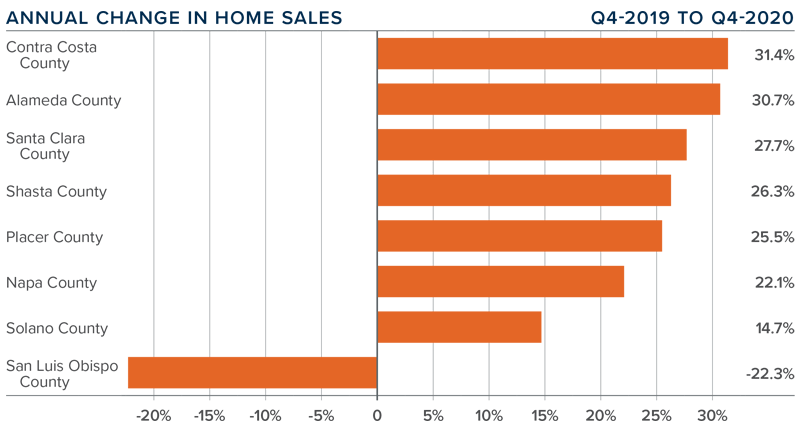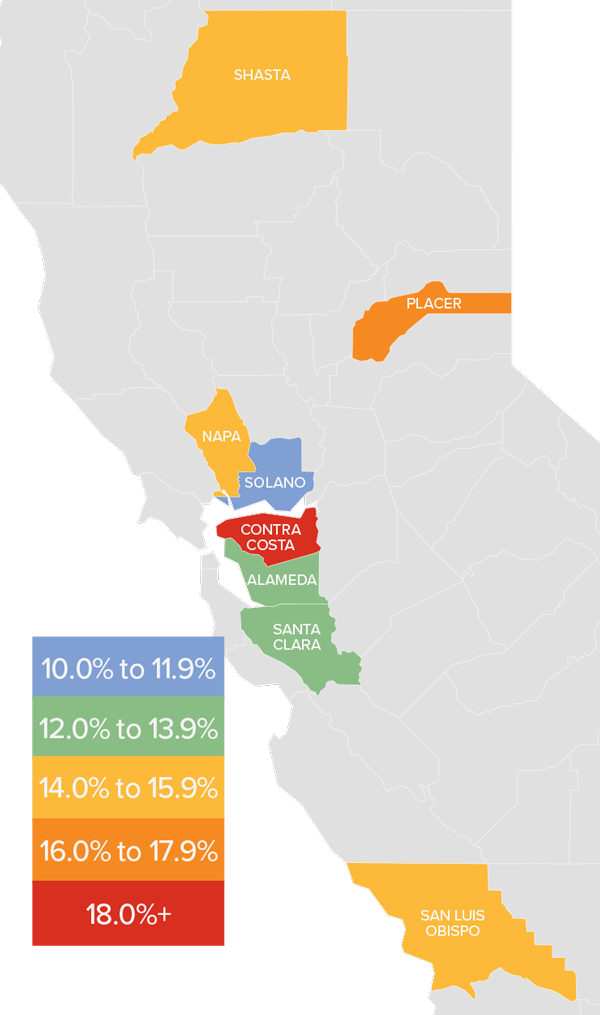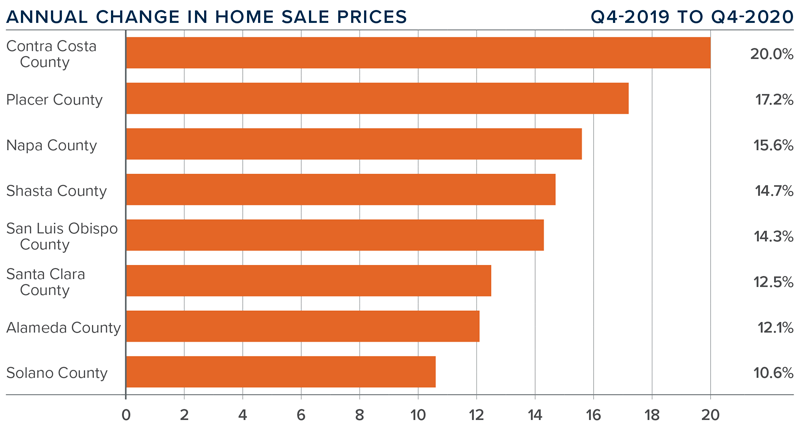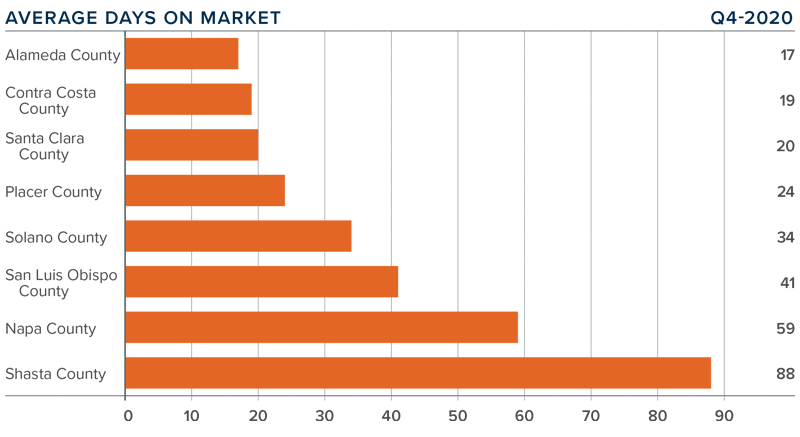The following analysis of the Northern California real estate market is provided by Windermere Real Estate Chief Economist Matthew Gardner. We hope that this information may assist you with making better-informed real estate decisions. For further information about the housing market in your area, please don’t hesitate to contact your Windermere agent.
Regional Economic Overview
New COVID-19 cases across California have been increasing, which has started to temper a job recovery that was performing rather admirably. That said, the Northern California region has recovered 265,000 of the 434,000 jobs that were lost. With jobs returning, the region’s unemployment rate continues to drop from a peak of 13.4% in April to 6.1% in November (the most recent data available). By county, the lowest jobless rate was in Santa Clara and Placer counties, where the rates were 5.1% and 5.2%, respectively. The highest rate was in Solano County where 7.5% of the workforce is still unemployed. The economic revival is still in place but rising COVID-19 infection rates are acting as a drag on the recovery.
northern california Home Sales
❱ In the final quarter of 2020, 14,341 homes sold, an increase of 26.3% compared to the same period a year ago. Sales were 3.1% lower than in the third quarter, which is not surprising as sales tend to slow in the winter months.
❱ Sales were positive year-over-year in all counties other than San Luis Obispo, with double-digit growth seen in all other markets.
❱ Listing activity was down 20.9% compared to the fourth quarter of 2019 and 17.5% lower than in the third quarter of 2020.
❱ Pending home sales pulled back 16.3% from the third quarter, which tells me that closings in the first quarter of 2021 may be relatively modest.

northern california Home Prices

❱ The average home price in the Northern California counties contained in this report rose 14.8% year-over-year to $1.05 million.
❱ The most affordable counties—relative to average sale prices—were Shasta and Solano. Price growth in these markets was very solid, but there were significant price increases in the more expensive counties as well.
❱ Average prices rose in all of the counties contained in this report. Even more impressive is that all markets saw prices rise by more than 10%.
❱ Home-price growth is a function of supply and demand. Supply levels are well below demand. With more buyers than sellers, prices are still rising at significant rates.

Days on Market
❱ The average time it took to sell a home in the Northern California counties covered by this report dropped 12 days compared to the final quarter of 2019.
❱ The amount of time it took to sell a home dropped in every county other than Shasta, where it increased 24 days year-over-year.
❱ In the fourth quarter, it took an average of 38 days to sell a home, with homes selling fastest in Alameda County and slowest in Shasta County.
❱ The greatest declines in market time were in Napa and Placer counties, where it took 24 fewer days to sell a home than in the fourth quarter of 2019.

Conclusions

This speedometer reflects the state of the region’s real estate market using housing inventory, price gains, home sales, interest rates, and larger economic factors.
Jobs continue to return, and buyers are out in good numbers. Unfortunately, home supply is still well below normalized levels, but I expect to see more new listings— and sales—as households who are able to continue working from home move to less expensive markets.
With concerns regarding wildfires fading, economic activity improving, and very low levels of available housing, the market clearly still favors sellers. As such, I have moved the needle a little more in their favor.
About Matthew Gardner

As Chief Economist for Windermere Real Estate, Matthew Gardner is responsible for analyzing and interpreting economic data and its impact on the real estate market on both a local and national level. Matthew has over 30 years of professional experience both in the U.S. and U.K.
In addition to his day-to-day responsibilities, Matthew sits on the Washington State Governors Council of Economic Advisors; chairs the Board of Trustees at the Washington Center for Real Estate Research at the University of Washington; and is an Advisory Board Member at the Runstad Center for Real Estate Studies at the University of Washington where he also lectures in real estate economics.
 Facebook
Facebook
 X
X
 Pinterest
Pinterest
 Copy Link
Copy Link



